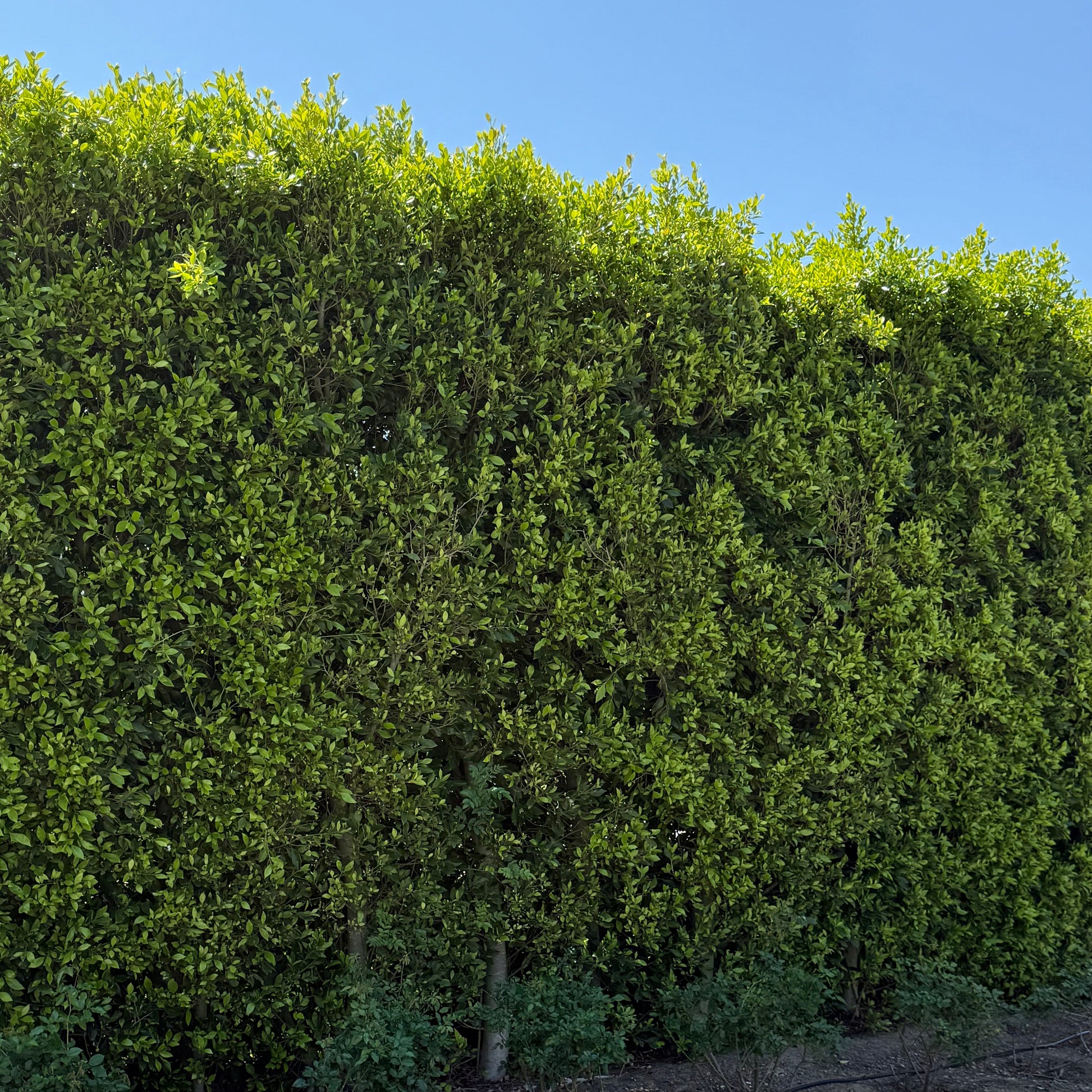
Indian Laurel
Ficus microcarpa nitida
Delivery
24-hour money-back guarantee
Free delivery on orders over $349
Big Project? Call 888-444-1126 for bulk rates!
Why Indian Laurel?
The Indian Laurel (Ficus microcarpa nitida) has earned its reputation as California's favorite privacy hedge for good reason. This exceptional evergreen creates a dense, lush barrier that transforms your outdoor space into a private sanctuary. From the palatial estates of Palo Alto & Beverly Hills to the Palm Springs weekend homes, this versatile hedge adorns the most prestigious properties across the state.
Quick Planting Guide:
For instant privacy: Plant close enough that leaves almost touch for immediate dense coverage.
Center-to-center Spacing
Center-to-center spacing refers to the distance between the centers of two adjacent plants.


Varieties & Uses
The Indian Laurel is incredibly versatile, with several popular applications:
-
Privacy Hedges: Create living walls that block unwanted views and reduce noise
-
Property Boundaries: Define your space with a beautiful natural border
-
Windbreaks: Protect your property from strong winds and erosion
-
Shade Trees: When allowed to grow as single specimens, they provide excellent shade
Why Choose Plants Express
- Professional Delivery: Our own fleet delivers directly to your door
-
Customer Support: Knowledgeable staff to answer all your questions
-
California Grown: Plants acclimated to local conditions for better success
- Guaranteed Quality: 24-hour money-back guarantee on all plants
How often should I water my Indian Laurel?
How long before I have privacy?
How tall will my Indian laurel get?
How do I maintain the ideal height and shape of my Indian Laurel?
30-40 ft.
3-10 ft.
Regular
Perfect Your Landscape With Expert Help
Customize your yard with confidence. Schedule your free consultation today and bring your outdoor space to life!
Size Matters: Bigger Hedges, Instant Privacy
When it comes to creating your dream landscape, starting with the right foundation makes all the difference. A robust hedge plant doesn't just look better on day one; it establishes faster, withstands stress better, and creates the privacy and beauty you desire in a fraction of the time.










